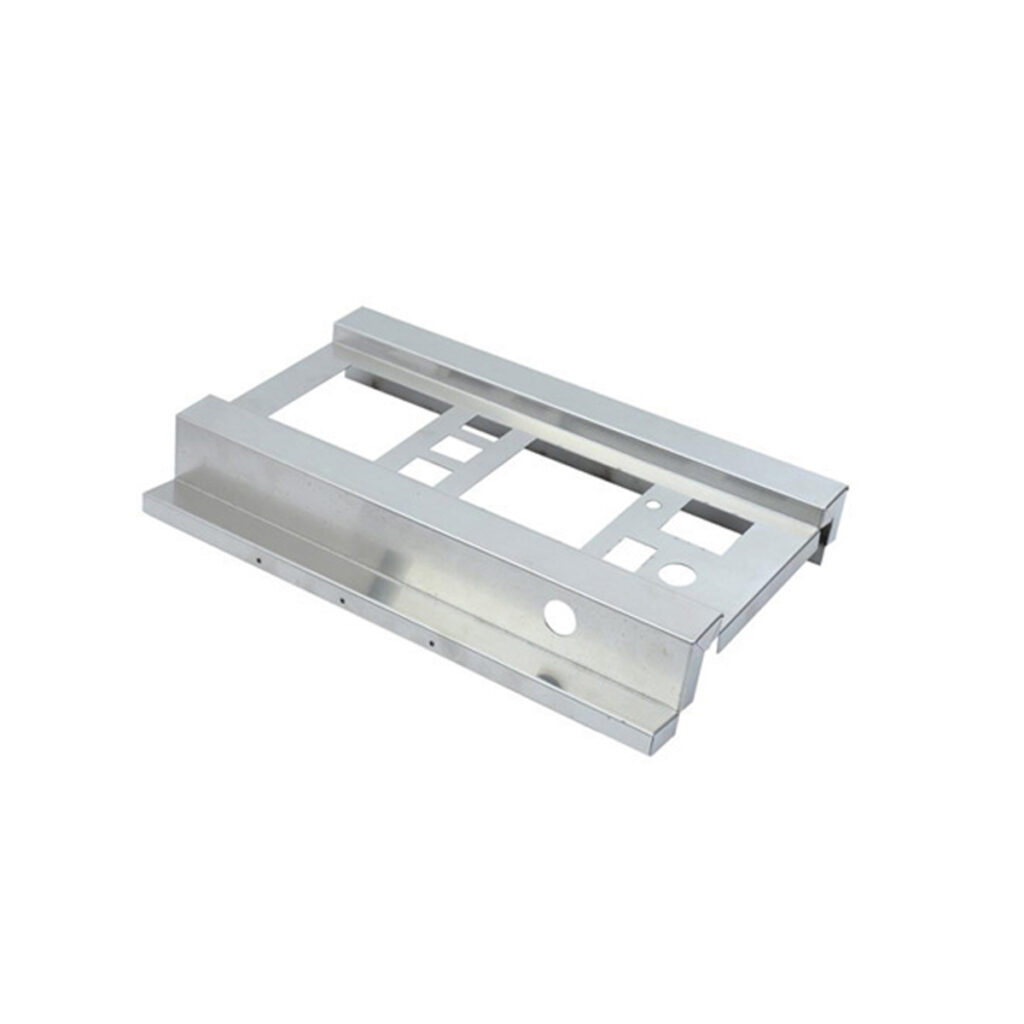Introduction
The battery tray—often called the “skateboard chassis” in EVs—accounts for 15-20% of total vehicle weight. With automakers targeting a 500 km+ range and stricter CO₂ regulations, reducing tray mass while maintaining crash safety has become critical.
Drawing from our work with Tesla, BYD, and CATL suppliers, this guide reveals five proven metal fabrication approaches that achieve 30% weight savings without compromising structural integrity.
1. High-Strength Steel (HSS) Stamping + Hydroforming
1.1 Material & Process Advantages
| Parameter | Conventional Steel | DP1000 HSS |
|---|---|---|
| Tensile Strength | 300-400 MPa | 1000 MPa |
| Weight Savings | Baseline | 25% |
| Forming Method | Standard Stamping | Hot Stamping + Hydroforming |
Key Innovations:
- Tailored Blanks: Laser-welded thickness variations (1.2mm → 0.8mm transition zones)
- Hydroformed Ribs: Increases stiffness by 40% vs conventional stamping
- Case Study: BYD’s Blade Battery tray uses 1.8GPa press-hardened steel with 27% mass reduction
2. Aluminum Extrusion + FSW (Friction Stir Welding)
2.1 Design Configuration
- 6061-T6 Profiles: 8-12mm wall thickness
- Multi-Hollow Sections: 6-12 internal chambers for crash absorption
- FSW Benefits:
- Zero Porosity vs MIG welding
- 95% Base Material Strength retention
Weight Reduction Breakdown:
| Component | Steel Version | Aluminum Version | Savings |
|---|---|---|---|
| Side Rails | 14.2 kg | 5.1 kg | 64% |
| Cross Members | 8.7 kg | 3.3 kg | 62% |
Thermal Management Bonus:
Integrated liquid cooling channels in extruded profiles (ΔT reduced by 15°C)
3. Hybrid Steel-Aluminum Multi-Material Design
3.1 Joining Technology Comparison
| Method | Shear Strength | Cost | Suitable Materials |
|---|---|---|---|
| SPR (Self-Piercing Rivets) | 3.2 kN | $$ | Steel + 5xxx Al |
| Adhesive Bonding | 25 MPa | $ | All combinations |
| Laser Brazing | 4.8 kN | $$$ | Steel + 6xxx Al |
Topology-Optimized Layout:
▶ Steel in crash zones (A/B pillars)
▶ Aluminum in non-critical areas (floor pan)
Volvo XC40 Recharge Example:
- 370kg battery pack
- Hybrid tray saves 18kg vs all-steel design
4. Magnesium Alloy Die Casting
4.1 Property Advantages
| Metric | AZ91D Mg | A380 Al | Mild Steel |
|---|---|---|---|
| Density (g/cm³) | 1.81 | 2.70 | 7.85 |
| Stiffness/Weight | 25 GPa·cm³/g | 26 GPa·cm³/g | 25 GPa·cm³/g |
Process Breakthroughs:
- Vacuum Die Casting: Reduces porosity to <1%
- Creep-Resistant Alloys: AE44 (Mg-4Al-4RE) for 150°C+ environments
Challenges & Solutions:
⚠ Galvanic Corrosion:
- Aluminized Steel fasteners
- Plastic insulating washers
5. Additive Manufacturing (L-PBF) for Complex Geometries
5.1 Laser Powder Bed Fusion Applications
- Topologically Optimized Brackets (50% lighter than CNC equivalents)
- Integrated Cooling Channels (Conformal designs impossible with machining)
Material Options:
- AlSi10Mg: Good strength-to-weight
- Ti6Al4V: For ultra-high-end applications
Cost Analysis:
| Process | Part Cost | Lead Time | Minimum Batch |
|---|---|---|---|
| Sand Casting | $ | 6 weeks | 100+ |
| CNC Machining | $$ | 2 weeks | 1 |
| L-PBF | $$$$ | 3 days | 1 |
Best For: Prototypes & low-volume premium vehicles
Weight Reduction Roadmap
Implementation Strategy
- Phase 1 (2024-2026):
- HSS stamping + aluminum extrusions (15-20% savings)
- Phase 2 (2027-2030):
- Multi-material + magnesium (25-30% savings)
- Phase 3 (2030+):
- AM-enabled generative designs (35%+ savings)



One Response
Why Partner With Us?
✔ Full-Service Development: From FEA simulation to crash testing
✔ Material Science Lab: On-site SEM & XRD analysis
✔ Industry 4.0 Production: AI-driven tolerance control (±0.05mm)
Request Free DFM Report: Upload your battery tray CAD model for instant weight reduction recommendations.